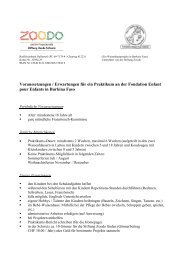12-2010 Citrus Flavonoids with Skin Lightening Effects ... - Hostpoint
12-2010 Citrus Flavonoids with Skin Lightening Effects ... - Hostpoint
12-2010 Citrus Flavonoids with Skin Lightening Effects ... - Hostpoint
Create successful ePaper yourself
Turn your PDF publications into a flip-book with our unique Google optimized e-Paper software.
COSMETICSSKIN LIGHTENINGS. Kiefer, M. Weibel, J. Smits, M. Juch, J. Tiedtke, N. Herbst*<strong>Citrus</strong> <strong>Flavonoids</strong> <strong>with</strong> <strong>Skin</strong> <strong>Lightening</strong> <strong>Effects</strong> –Safety and Efficacy Studies IntroductionWith ageing of the skin pigmentary disorderssuch as age spots, melasma, anduneven skin tone become more frequent.An even, bright and unblemished skin isone of the main criteria for a younglooking appearance (1-3). Hence skinlightening products form a major segmentin the cosmetic industry and are apart of many anti-ageing products thatreach the market every year.AbstractMelanin, the substance responsible forthe pigmentation of the skin, is producedto protect the DNA from harmful, mutagenicUV radiation. Age spots or solarlentiges are age-related and UV irradiation-inducedpigmented spots that usuallyoccur on sunlight-exposed areassuch as the face, the back of the hands,and the upper chest.The rate-limiting enzyme in melanin formationis polyphenol oxidase tyrosinase(EC 1.14.18.1) which catalyses the oxida-Ayouthful appearance is not only related to the absence of wrinklesbut also to skin radiance and an even skin tone. Many cosmetic ingredientsare used to lighten skin by the inhibition of tyrosinase, therate-limiting enzyme in melanin formation. <strong>Flavonoids</strong>, as major constituentsof the human diet, have many well-known beneficial qualities.The aim of this study was to find the ideal composition of flavonoids fromvarious citrus extracts for an effective skin lightening cosmetic ingredient.A chosen blend of citrus extracts was tested for safety and in vitro efficacy.No cytotoxic effects up to 0.8mg/ml could be detected and inhibition ofhuman tyrosinase was 60% at 0.4mg/ml. The blend of citrus extracts wasliposomal-encapsulated, incorporated into a cosmetic formulation at 1%,and then tested for stability and skin irritation capacity, as well as eye irritationand mutagenic potential and exhibited a very good safety profile.Finally the product was studied in vivo on Caucasian skin for efficacy during56 days and showed marked skin brightening effects at a concentrationof 1% (0.4mg/ml).This liposomal-encapsulated citrus flavonoid blend is effective at 1% in acosmetic formulation to fade age spots and brighten skin tone.tion of tyrosine to dopaquinone (4). Thesubsequent steps of melanin formationfrom dopaquinone can occur spontaneouslyat physiological pH. Dopaquinoneis oxidized to dopachrome and throughfurther oxidation reacts to melanin.Many of the currently used depigmentingagents are tyrosinase inhibitors, asit seems the most straightforward wayto inhibit melanin formation. Althoughmore recent in-depth knowledge ofmelanocyte biology and the processesunderlying melanin formation has producedother interesting targets for thetreatment of hyper-pigmentation, suchas the inhibition of translation and maturationof tyrosinase, stimulation of degradationand acceleration of skin turnover.The best known skin whitening agent ishydroquinone, which has been used forover 50 years now although some controversyabout it has come up in recentyears. Long term use of high concentrationsof hydroquinone can produce sideeffects like ochronosis, a thickening anddarkening of skin, especially of darkskinnedindividuals (5) and general safetyconcerns have been brought up byregulatory agencies all over the world.Therefore there is still a need for safe andeffective skin lightening products andthe hunt for natural skin lighteners (6) isongoing.<strong>Flavonoids</strong> form major constituents ofthe human diet as they contribute to theflavour and colour of many fruits andvegetables. Their beneficial antioxidanteffects are thoroughly studied and established.The highest content of citrus flavonoidscan be found in unripe citrus fruits (7).46 SOFW-Journal | 136 | <strong>12</strong>-<strong>2010</strong>




